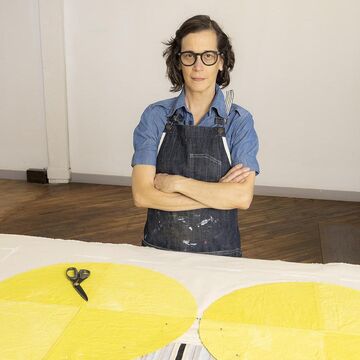

Diana Guerrero-Maciá
Professor, Presidential Professor
Contact
Bio
Diana Guerrero-Maciá’s practice includes a hybrid investigation of painting, textiles, print & sculptural objects with an interest in sustainable craft practices. Her largely abstract works engage with myth, iconography, symbols, and color. She is most known for her unpainted pictures, poetic abstract paintings constructed from textiles. Guerrero-Maciá is a 2023 Lenore Tawney Fellow, 2021 John Simon Guggenheim Fellow, a Louis Comfort Tiffany Foundation Fellow, and a MacDowell Fellow.
Diana’s artworks are held in multiple collections both public and private. She has exhibited extensively at noted public institutions such as The John Michael Kohler Art Center; Museum of Contemporary Art, Chicago; Artpace, San Antonio; Elmhurst Museum; Museum of Contemporary Art, St. Louis, and the Crocker Art Museum. She is represented by Carrie Secrist Gallery in Chicago and Traywick Contempory in San Francisco. Guerrero-Maciá is alumnae of Skowhegan, Cranbrook Academy of Art, Penland School of Craft, and Villanova University.




